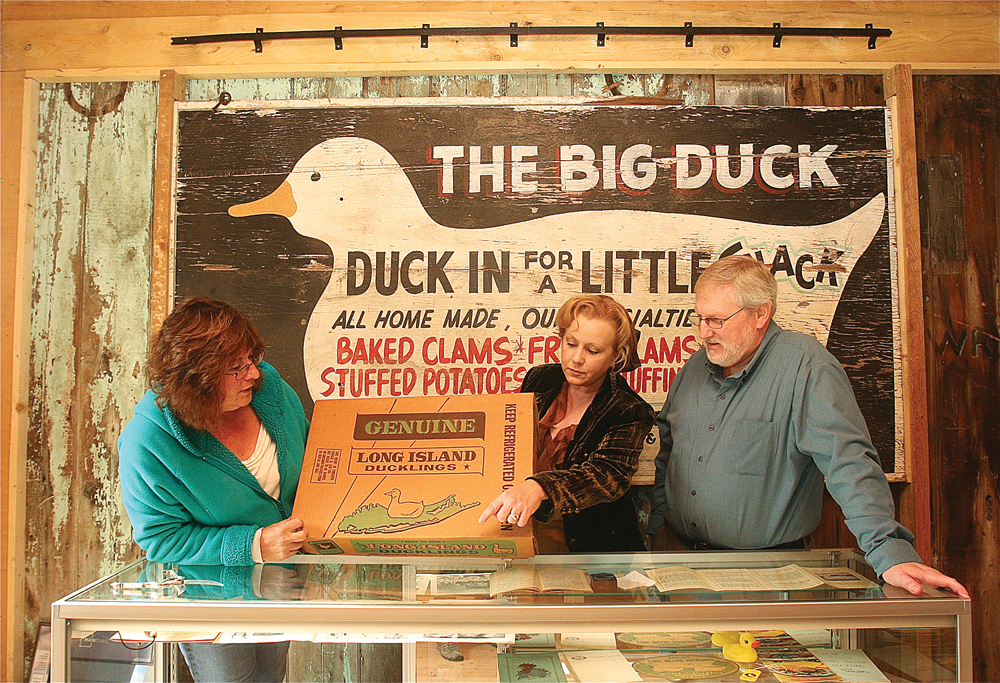Duck farm museum opening in Flanders Saturday

It’s an industry that once defined the area. And while duck farming has faded over the past several decades, Friends of the Big Duck are determined to keep Long Island’s history in the business alive and well in Flanders for future generations to learn about.
“Most people have no idea how large the [duck] industry was out here,” said Lisa Dabrowski, co-curator of the Big Duck Museum, which opens its doors Saturday. “I am looking forward to seeing the reaction when visitors see how inspiring the industry really was.”
Made possible thanks to $220,000 in Southampton Town Community Preservation Fund monies, a barn on the Flanders property that was once home to a duck farm has been restored to serve as the museum’s home.
To fund the venture, Southampton Town Historian Zachary Studenroth helped secure $5,000 in grant funding from the Suffolk County Department of Parks, Recreation and Conservation. The amount was matched by Friends of the Big Duck.
Ms. Dabrowski’s fellow curator David Wilcox, Southampton Town’s planning director — whose family ran a duck farm in nearby Speonk for 104 years — said he believes the museum will help give meaning to the vast industry behind the famed Big Duck statue in Flanders.
The museum’s grand opening comes shortly after the news that Long Island will soon have just one surviving duck farm: Crescent Duck Farm in Aquebogue, which has been in operation for 106 years.
The island’s only other duck farm, Chester Massey & Sons in Eastport, announced in mid-September that it will close later this year. It’s being forced out of the market due to the cost of keeping up with state regulations, owners said.
“It’s kind of ironic that it is opening now, “Mr. Wilcox said of the museum. “It’s kind of sad, too. But you don’t usually dedicate a museum to something until it is gone. Luckily, we still have one [duck farm] left, and it doesn’t seem to be going anywhere anytime soon.”
The farm in question, a 145-acre operation in Aquebogue owned by Douglas Corwin, produces around one million ducks annually, accounting for about 4.5 percent of production nationwide. It’s also home to Long Island’s last duck processing center.
According to Suffolk County records, Long Island duck farming reached its peak in the 1950s, with more than 90 farms producing 7.5 million ducks annually — about two-thirds of all production nationwide. At the time, the local duck industry was as significant to New York State’s economy as the statewide commercial fishing industry.
At the museum — a veritable step back in time — visitors will see everything from egg incubators to feed and water troughs to a piece of equipment used to help process the ducks according to old federal Department of Agriculture standards.
Wooden and wire baskets once used to collect eggs and process birds demonstrate the simplicity of early farming days, as does an old wood-burning stove — the only way farmers used to be able to keep their birds warm.
“In the early days, farmers would have to turn each and every egg inside the incubator to ensure the internal temperature of the egg was regulated property,” Ms. Dabrowski said.








